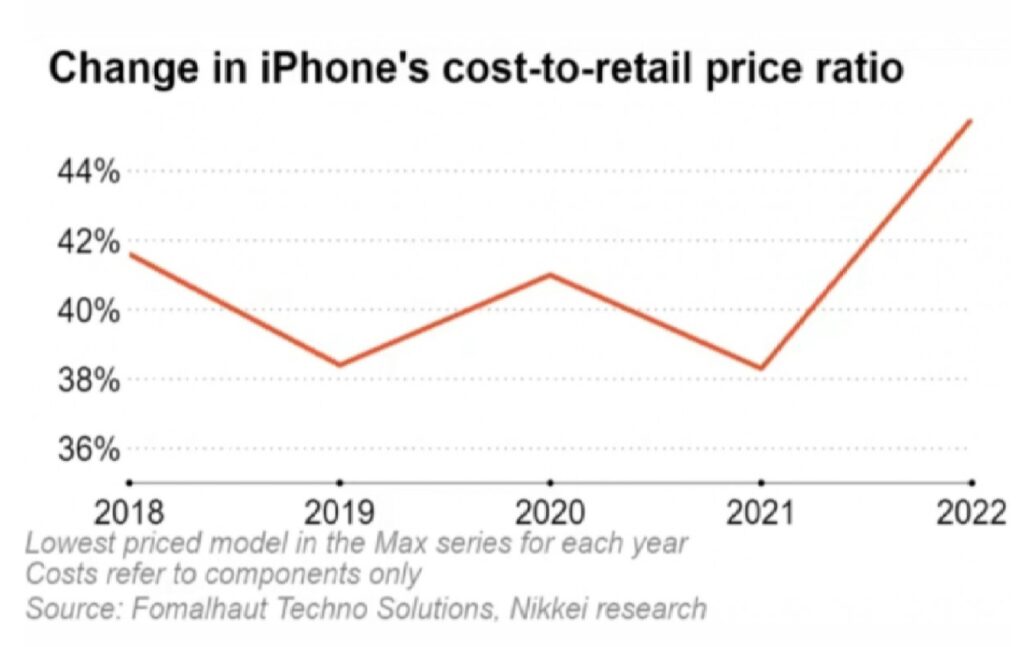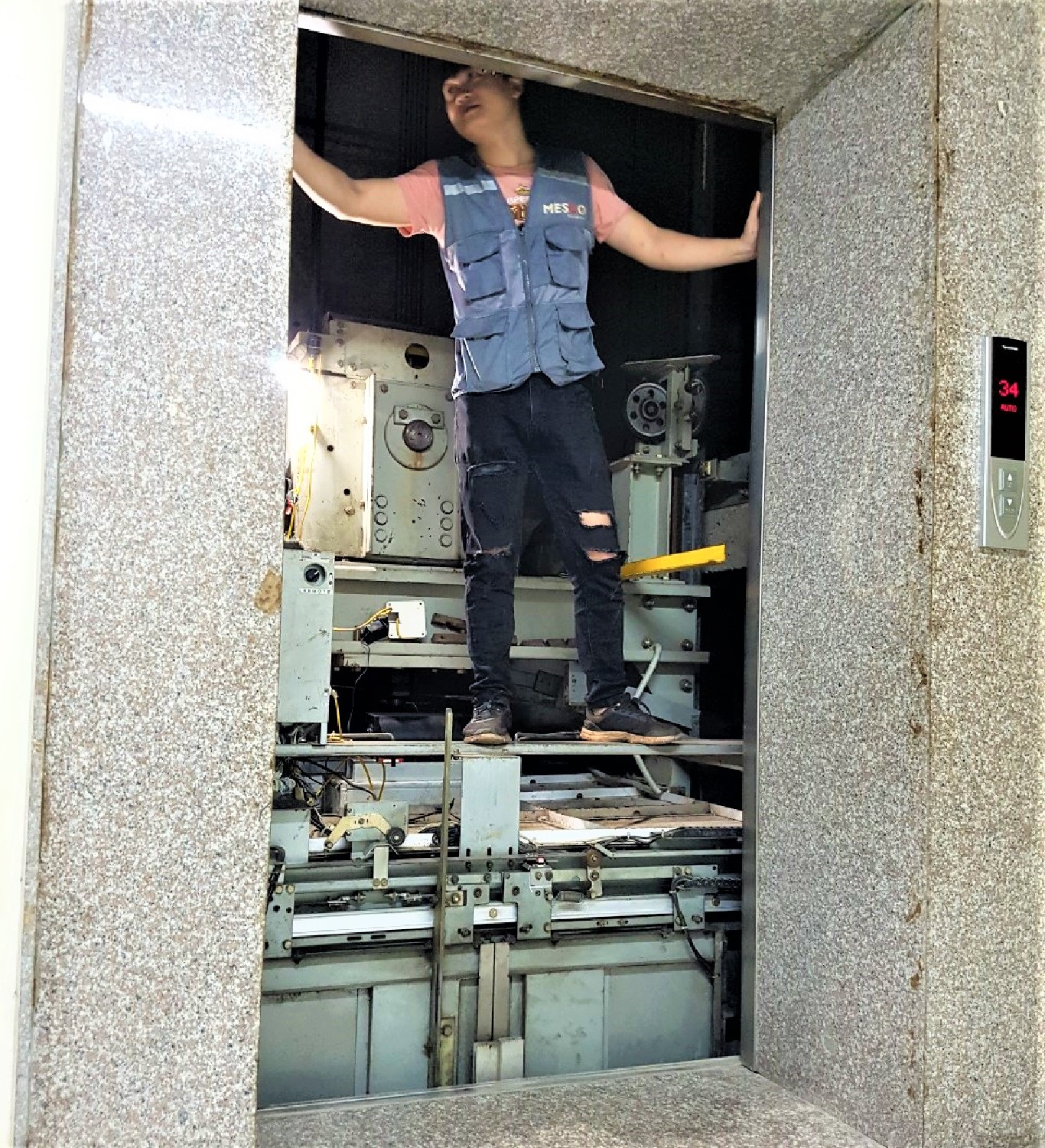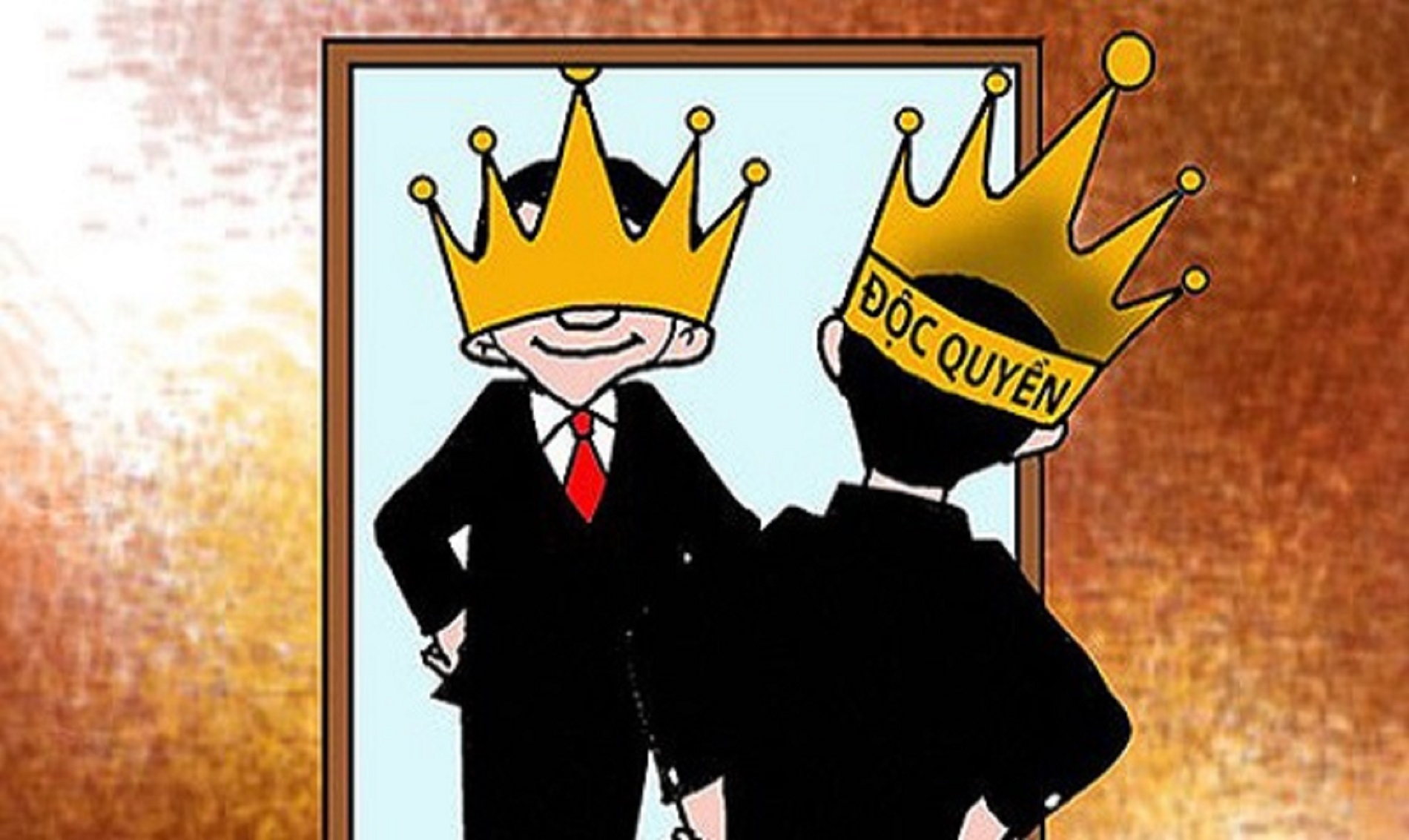EM – Regardless of the device, after a period of use, the details and components will be aging, degraded or damaged and need to be replaced. At that time, if the equipment is distributed exclusively, consumers will “take the blow” of the supplier.
Obligation?
As soon as Apple’s latest iPhone model was released, curiosity about the quality and cost of components led people to peel it off to see what the true value is inside the super product. The results show that the component price of iPhone 14 has increased by about 20% compared to iPhone 13 launched last year, but the selling price has remained unchanged. As such, it is certain that Apple’s profit margin will decrease by not small numbers and of course Apple is not “dumb” when implementing such a policy.

The cost-to-retail ratio of iPhones will increase in 2022
Instead of answering the question why, we want our readers to follow what happened and got Apple into a lot of litigation.
In 2019, the US House of Representatives Judiciary Committee said that Apple intentionally designed products to make it difficult for users to repair. The proof is that Apple has repeatedly released iOS updates that disable on-screen touch that is repaired by third parties. After the update, people who replaced the broken screen themselves or had it repaired outside has reported about touch paralysis.
Just recently, the French Environmental Organization (HOP) filed a lawsuit against Apple for “serializing” every part of a smartphone and linking components through chips and software. So users can’t fix it themselves without Apple’s permission.
“These practices undermine not only the right to repair, but also the growth of refurbished smartphones,” HOP’s nearly 60-page complaint reads.
The above example shows that Apple as well as many businesses in many industries and professions are using the monopoly method of supplying synchronous components to replace equipment, leading to controlling the market as well as the interests of consumers.
It is a bondage that makes consumers dependent!
The same goes for elevator industry
Every part, equipment, and machine has a certain life cycle and elevator components are no exception. The product life cycle of elevator components varies widely. There are elevator components that can be used for 15-20 years, but there are also components that have the best period of operation in the first 3-5 years.
Therefore, after the warranty period, the elevator is also required to periodically maintain and replace components and equipment.

Equipment components are all old and need to be replaced for the elevator to operate stably and safely
Lighting devices; Photocells; Landing button; Limit switch; Elevator fan; Encoder; Guiding shoe; Door operator; Overspeed protective device; Automatic rescue device, etc. are often aging equipment, and need to be replaced after a period of time.
Or like wire ropes and pulleys, these devices operate mechanically with high intensity as well as create great friction, so they are quickly degraded over time, needing to be adjusted or replaced…
In fact, the above devices can all be bought from the original manufacturer or a third-party supplier. These devices are designed to conform to the same standards as the original product, providing an additional option when replacing equipment.
But with more complex devices such as control cabinets, the exclusivity is clear. A major Japanese brand elevator has broken an important device in the control cabinet: the inverter. People must replace this device of the manufacturer to make the control cabinet work, and if not, the whole cabinet must be replaced. But the price of this device is twice as expensive as replacing a new cabinet of the same type!
The component monopoly from the manufacturer did not give customers many options other than Yes or No. And so, many Vietnamese customers are now dependent on imported elevator products in such way.
Is monopoly on replacement parts legal or illegal?
That is a question asked by many people. And in fact there are many legal documents related to this issue.

Article 27, Competition Law 2018 lists acts of abusing a dominant position, a monopoly position to limit competition, which may cause damage to users and businesses doing business in the same field.
The first is a group of behaviors of enterprises with a dominant or exclusive position in the relevant market that imposes unfavorable commercial conditions on customers in order to obtain monopoly profits. There, the phenomenon of that number of buyers and sellers are the same will be an opportunity for sellers to take advantage of to create unfavorable conditions for buyers in the transaction. Abusive behavior benefits businesses not from business performance but from adverse commercial conditions that customers have to endure. The benefits that businesses can gain can be monopoly profits, the ability to control market factors such as raw materials, materials, supply, etc.
This group of behaviors also includes acts of unreasonable restriction of production and distribution of goods and services, market limitation; Imposing different commercial conditions for transactions to create inequality for customers; Imposing unreasonable buying and selling prices of goods or services or fixing prices that cause damage to customers…
The act of imposing unreasonable buying and selling prices or fixing resale prices, causing damage to customers, is considered one of the typical acts of exploitative abuse.
The second is a group of abusive acts of monopoly carried out by enterprises with a dominant position or a monopoly position in order to stifle competition by eliminating or preventing competitors from entering the market to maintain and strengthen market power.
Typical of this group of behaviors is selling goods and services below full cost in order to eliminate competitors (also known as predatory pricing or destructive pricing) or to prevent new competitors enter the market.
Both of these groups of monopolistic behavior appear in the field of elevators, which has distorted the domestic elevator market and caused many bad consequences.
The first is that consumers are dependent on suppliers of products and associated components. They are forced to accept unreasonably expensive parts or services.
The second is to cause foreign currency bleeding. Proprietary components that are not produced in the country but are mostly produced abroad and imported into Vietnam will consume a lot of foreign currency.
The third is to limit the development of domestic enterprises. In many countries (typically China), one of the conditions for joining the market is to form a joint venture, set a time for technology transfer, etc., instead of just selling products and collecting money…
According to the provisions of the Competition Law, the maximum fine for the above acts is 10% of the total revenue of the enterprise. Or the maximum fine for other acts of violating the provisions of this Law is VND 200,000,000…
In the international aspect, developed countries have very heavy regulations on penalties for monopolistic acts.
As in the United States, Cartels (acts that restrict mutual competition between companies, such as simultaneous price increases and production restrictions) are prohibited under the Sherman Act Article 1 and the Federal Trade Commission Act Article 5. The US Antitrust Law is very strict about the prohibition of cartels with a few special exceptions. This law is said to have actively promoted fair competition for the benefit of consumers.
The European Union’s (EU) Competition Law requires member-state governments not to introduce or maintain measures that restrict one of the union’s three fundamental freedoms: freedom of movement goods, freedom of movement and the provision of services.
In addition, the EU’s competition policy also strictly controls state subsidies for its enterprises, to prevent the tendency of governments to adopt certain subsidies or privileges compensating for monopolies…/.
Thien Hoang



